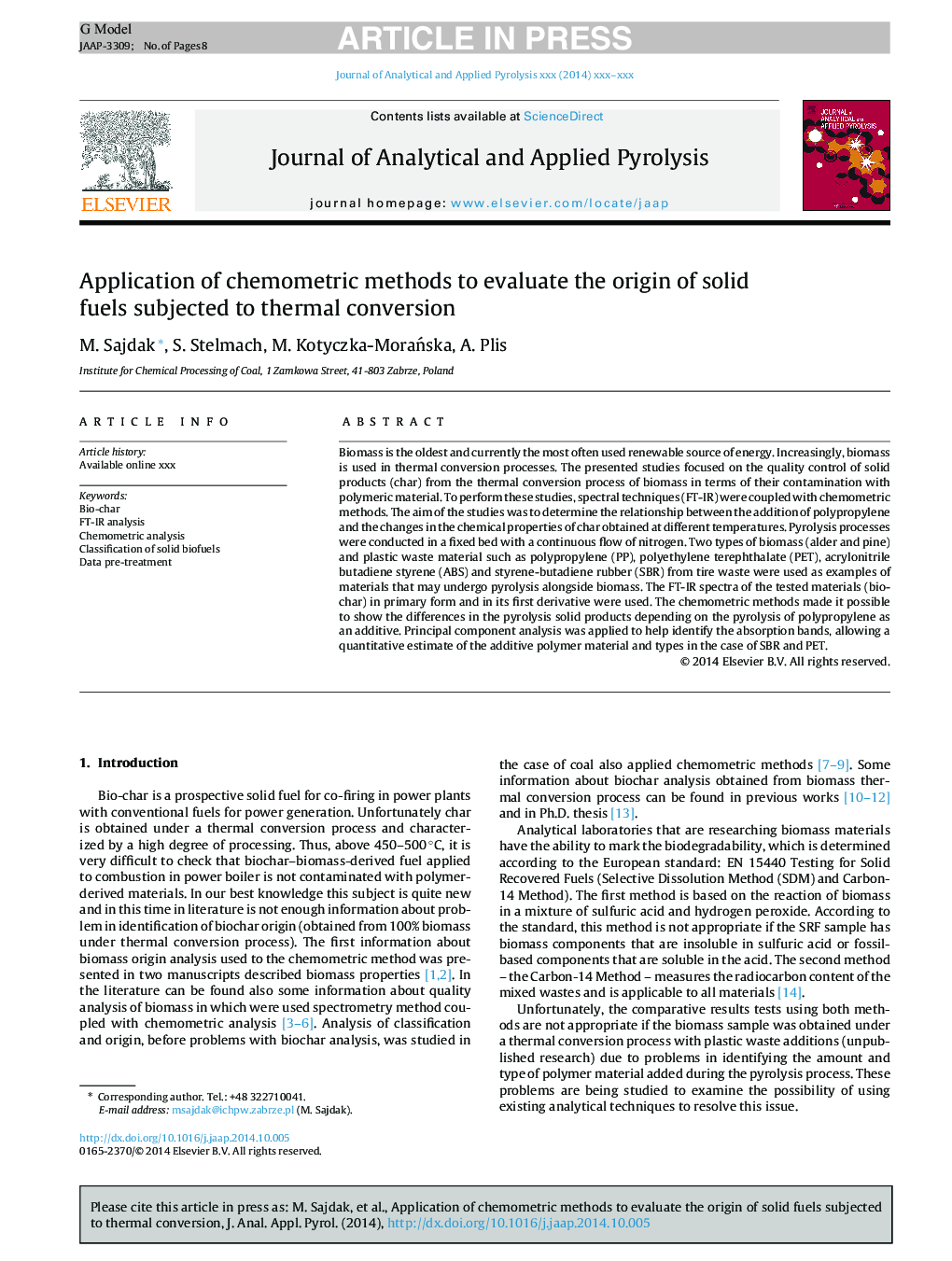| Article ID | Journal | Published Year | Pages | File Type |
|---|---|---|---|---|
| 7606626 | Journal of Analytical and Applied Pyrolysis | 2015 | 8 Pages |
Abstract
Biomass is the oldest and currently the most often used renewable source of energy. Increasingly, biomass is used in thermal conversion processes. The presented studies focused on the quality control of solid products (char) from the thermal conversion process of biomass in terms of their contamination with polymeric material. To perform these studies, spectral techniques (FT-IR) were coupled with chemometric methods. The aim of the studies was to determine the relationship between the addition of polypropylene and the changes in the chemical properties of char obtained at different temperatures. Pyrolysis processes were conducted in a fixed bed with a continuous flow of nitrogen. Two types of biomass (alder and pine) and plastic waste material such as polypropylene (PP), polyethylene terephthalate (PET), acrylonitrile butadiene styrene (ABS) and styrene-butadiene rubber (SBR) from tire waste were used as examples of materials that may undergo pyrolysis alongside biomass. The FT-IR spectra of the tested materials (bio-char) in primary form and in its first derivative were used. The chemometric methods made it possible to show the differences in the pyrolysis solid products depending on the pyrolysis of polypropylene as an additive. Principal component analysis was applied to help identify the absorption bands, allowing a quantitative estimate of the additive polymer material and types in the case of SBR and PET.
Related Topics
Physical Sciences and Engineering
Chemistry
Analytical Chemistry
Authors
M. Sajdak, S. Stelmach, M. Kotyczka-MoraÅska, A. Plis,
